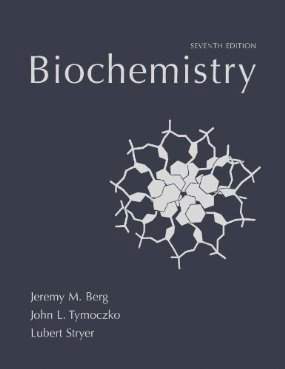Connecting...

For more information, please see full course syllabus of Biochemistry
Biochemistry Enzymes III: Kinetics
Kinetics describes reaction rates – how quickly reactants are transformed into products – making it a powerful tool in understanding reaction mechanisms. The rates of enzyme-catalyzed reactions depend on the concentration of the substrate. To find the rate law for a reaction, a large amount of substrate is added to the enzyme and initial rates of reaction are measured. The experiment is repeated with different concentrations of substrate. By graphing the results, Vmax, half Vmax, and Kₘ from the Michaelis-Menten equation can be found. When the enzyme (E) and substrate (S) form the enzyme-substrate complex (ES), this complex exists in a steady-state condition as the enzyme begins to produce product. The breakdown of ES into products determines the rate of the reaction (it is the “rate determining step”).
Share this knowledge with your friends!
Copy & Paste this embed code into your website’s HTML
Please ensure that your website editor is in text mode when you paste the code.(In Wordpress, the mode button is on the top right corner.)
- - Allow users to view the embedded video in full-size.










































 Answer Engine
Answer Engine




2 answers
Last reply by: Swati Sharma
Tue Mar 27, 2018 7:00 AM
Post by Swati Sharma on March 26, 2018
Dear Dr Raffi,
I wanted to ask you that I am going to prepare for my MCAT exams and I was planning to use your general chemistry videos, but I am very confused of what section should I use, as there is one AP general chemistry and one simple general chemistry and the same applies to Biology, and so therefore I am really lost of which general chemistry videos should I use for my MCAT prep, according to college level. If you could please let know it could save me time from watching all the videos. And also if you tell me that if these videos are good source for MCAT prep
2 answers
Last reply by: Gabriel Au
Fri Oct 10, 2014 7:59 PM
Post by Gabriel Au on October 9, 2014
Hey professor Hovasapian,
I have been watching many of your videos for many classes and I think you do a great job! I was wondering If you will ever do a series of videos specifically for complex variables?
1 answer
Wed Dec 4, 2013 3:40 AM
Post by Assaf Tolkowsky on December 4, 2013
Just a pointer - you have a mistake with the algebra at 42:46 - Km is (k-1+k2)/k1 and not (k1+k2)/k-1 like you wrote down
0 answers
Post by tiffany yang on November 13, 2013
Dear professor,
Can you please explain why when [E]total increases, why Km stays the same?
and what does Kcat depends on?
is catalystic efficiency independent from enzyme concentration? what does it depend on?
Thank you so much. I truly truly appreciate it.
1 answer
Sat May 4, 2013 3:37 AM
Post by Brian Phung on May 1, 2013
Hi I was wondering how do I determine the inhibition mechanism meaning if its competitive or noncompetitive inhibition by the shapes of plots of (kcat)ATP versus [I] and (kcat/Km)ATP versus [I] were used to determine the inhibition mechanism?